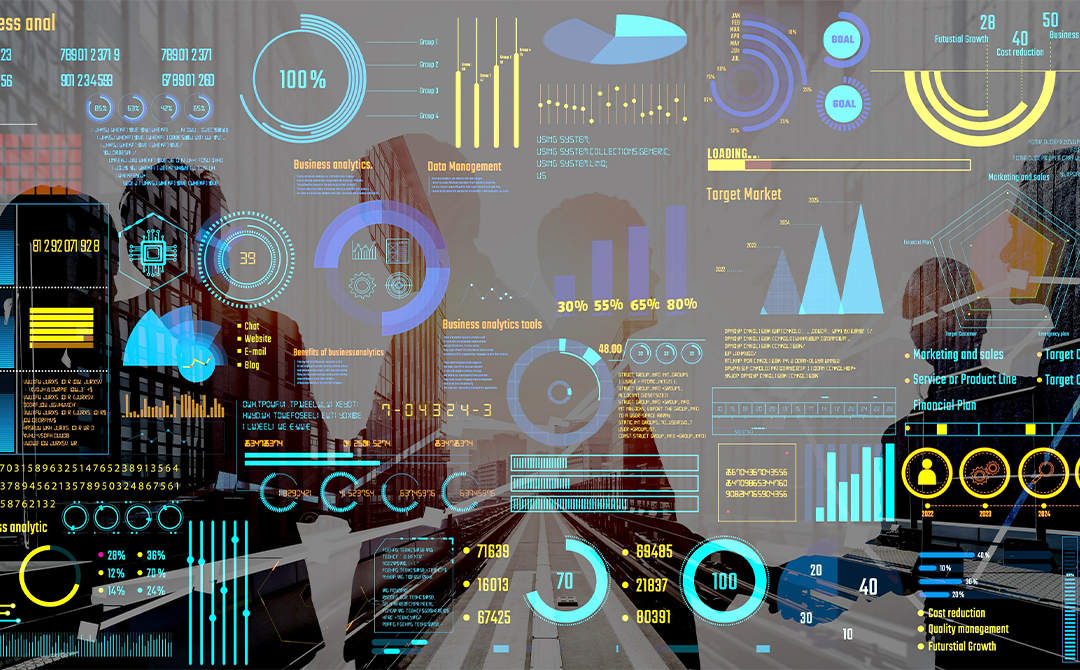
What is Dynamic Pricing Optimization?
Dynamic pricing optimization adjusts prices using real-time data on demand, competition, and market trends. By leveraging machine learning, it maximizes revenue, enhances competitiveness, and improves customer satisfaction through demand prediction and personalized pricing.
Dynamic pricing has become increasingly important in today's competitive marketplace, where consumer preferences and market conditions can change rapidly. By leveraging data analytics and machine learning algorithms, businesses can gain insights into pricing dynamics and make informed decisions to maximize profitability while remaining competitive.
What is Dynamic Pricing Model?
A dynamic pricing model adjusts product prices in real time based on market demand, competition, and customer behavior. It helps businesses stay competitive, maximize revenue, and respond swiftly to market changes.
Dynamic Pricing Vs Surge Pricing
Dynamic pricing adjusts prices based on real-time factors like demand, competition, and inventory. Surge pricing is a type of dynamic pricing triggered by sudden demand spikes, common in ride-hailing or events. While both are flexible, surge pricing is more reactive to short-term demand surges.
Evolution of Pricing Strategies: Dynamic pricing is not new; it has been utilized in various industries for decades. However, technological advancements, particularly in data analytics and machine learning, have revolutionized how dynamic pricing is implemented and optimized.
Historically, dynamic pricing was prevalent in industries such as airlines, hotels, and rental car companies, where prices would fluctuate based on factors like demand, seasonality, and booking patterns. With the rise of e-commerce and online platforms, dynamic pricing has become more widespread across retail, transportation, and entertainment industries.
Need for Adaptive Pricing Models: Static pricing models, while straightforward to implement, often fail to capture the dynamic nature of consumer demand and market conditions. In contrast, dynamic pricing allows businesses to adjust prices in real-time, ensuring they remain competitive and maximize revenue.
Figure 1 Static vs Dynamic Pricing
In today's fast-paced digital economy, where consumers can access vast information and alternatives, businesses must adopt adaptive pricing models to stay relevant. Dynamic pricing allows firms to optimize prices based on supply and demand, competitor pricing, and customer segmentation, enhancing profitability and customer satisfaction.
Dynamic pricing represents a paradigm shift in pricing strategies, empowering businesses to adapt to changing market dynamics and gain a competitive edge. In the following sections of this blog, we will delve deeper into the principles, applications, and implementation of dynamic pricing with machine learning algorithms.
Understanding Dynamic Pricing
Principles and Concepts
Dynamic pricing is based on the fundamental supply and demand economics principle. The concept revolves around adjusting prices in response to changes in market conditions to optimize revenue and profit margins. Key principles and concepts include:
- Price Elasticity: The degree to which demand for a product or service changes in response to changes in its price. ("Do markets overcome repugnance? Muslim trade response ... - ScienceDirect") Understanding price elasticity helps businesses gauge the impact of price changes on demand and revenue. ("Understanding Price Elasticity of Demand: A Powerful Tool ... - Business")
- Optimal Pricing: Finding the right balance between maximizing revenue and maintaining competitiveness. Dynamic pricing algorithms aim to identify the optimal price point that maximizes profitability while considering various factors such as demand, competition, and cost structures.
- Real-time Adjustments: Unlike static pricing, where prices remain fixed for extended periods, dynamic pricing involves making real-time adjustments based on continuous monitoring of market dynamics. This enables businesses to adapt quickly to changes in demand, competitor pricing, and other external factors.
Factors Influencing Dynamic Pricing
Several factors influence dynamic pricing decisions, including:
- Demand: Fluctuations in consumer demand play a significant role in determining prices. Higher demand often leads to higher prices, while lower demand may result in price reductions to stimulate sales.
- Competitor Pricing: Monitoring competitor prices is essential for staying competitive. Dynamic pricing algorithms analyze competitor pricing data to adjust prices accordingly and maintain competitiveness in the market.
- Seasonality and Trends: Seasonal variations, holidays, and other trends can impact consumer behavior and demand patterns. Dynamic pricing considers seasonal factors to optimize prices and capitalize on peak demand periods.
- Inventory Levels: Managing inventory levels is crucial for dynamic pricing. Pricing decisions may vary based on inventory levels, with higher prices during periods of low supply and lower prices when inventory levels are high.
Dynamic pricing offers several advantages, including:
- Maximized Revenue: By adjusting prices based on demand and market conditions, businesses can maximize revenue and profit margins.
- Competitive Advantage: Dynamic pricing enables businesses to stay competitive by responding quickly to changes in competitor pricing and market dynamics.
- Improved Efficiency: Automated pricing algorithms streamline the pricing process, reducing the need for manual intervention and enabling businesses to make data-driven pricing decisions.
However, dynamic pricing also presents challenges, such as:
- Price Perception: Excessive price fluctuations may lead to customer dissatisfaction or distrust if not managed effectively. Businesses must strike a balance between optimizing prices and maintaining customer loyalty. ("Effective Pricing Strategies for the Indian Market | Ondret")
- Complexity: Dynamic pricing requires sophisticated technology infrastructure, data analytics, and machine learning expertise. Businesses must invest the necessary resources and capabilities to implement dynamic pricing strategies successfully.
Machine Learning in Dynamic Pricing
- Role of Machine Learning Algorithms: Machine learning algorithms play a significant role in dynamic pricing by analyzing vast amounts of data to identify patterns, trends, and correlations that inform pricing decisions. Unlike traditional pricing models that rely on simple rules or heuristics, machine learning algorithms can uncover complex relationships between pricing factors and customer behavior, enabling businesses to make more accurate and nuanced pricing decisions.
- Data-driven Decision Making: Machine learning algorithms enable data-driven decision-making in dynamic pricing by leveraging various data sources, including historical sales data, customer demographics, competitor prices, and market trends. By analyzing this data, machine learning models can generate insights into pricing dynamics and forecast demand, allowing businesses to optimize prices and maximize revenue.
Advantages over Traditional Methods
Machine learning offers several advantages over traditional methods in dynamic pricing:
- Scalability: Machine learning algorithms can manage large volumes of data and complex models, making them well-suited for dynamic pricing in industries with a wide range of products and fluctuating demand patterns.
- Flexibility: Machine learning models are highly adaptable and can be customized to specific business needs and objectives. This flexibility allows businesses to incorporate additional factors and constraints into their pricing models, such as inventory levels, promotional events, and customer segmentation.
- Accuracy: Machine learning algorithms can identify subtle patterns and correlations in data that may not be apparent to human analysts. This enables more accurate demand forecasting and pricing predictions, resulting in better pricing decisions and improved revenue optimization.
- Real-time Insights: Machine learning algorithms can analyze data in real-time, allowing businesses to respond quickly to market conditions and customer behavior changes. This real-time responsiveness is crucial in dynamic pricing, where prices may need to be adjusted rapidly to capture emerging opportunities or mitigate risks.
Critical Components of Dynamic Pricing
Data Collection and Analysis
One of the foundational components of dynamic pricing is collecting and analyzing relevant data.
- Historical Sales Data: Past sales data provides valuable insights into demand patterns, seasonality, and customer preferences. Analyzing historical sales data allows businesses to accurately identify trends and forecast future demand.
- Competitor Pricing Data: Monitoring competitor prices is essential for dynamic pricing. ("Dynamic and competitive pricing - which to choose?") By collecting data on competitor prices, businesses can benchmark their prices against competitors and adjust prices accordingly to maintain competitiveness.
- Market Trends and External Factors: Dynamic pricing algorithms consider external factors such as economic conditions, consumer sentiment, and industry trends. Analyzing these factors helps businesses understand the broader market landscape and adapt their pricing strategies accordingly.
- Customer Data: Customer data, including demographic information, purchase history, and browsing behavior, can provide valuable insights into individual preferences and purchasing behavior. Businesses can personalize pricing strategies and tailor offers to specific customer segments by leveraging customer data.
Predictive Modeling Techniques
Predictive modeling techniques forecast demand, predict customer behavior, and optimize pricing decisions. Common predictive modeling techniques used in dynamic pricing include:
- Regression Analysis: Regression analysis is used to identify relationships between pricing factors and demand. By analyzing historical sales data and pricing variables, businesses can develop regression models to predict future demand and optimize prices accordingly.
- Machine Learning Algorithms: Machine learning algorithms, such as decision trees, random forests, and neural networks, are powerful tools for dynamic pricing. These algorithms can analyze large volumes of data and identify complex patterns and correlations that may not be apparent to human analysts. ("AI's Role in Data Science: Benefits, Challenges, and Collaboration")
- Time-series Forecasting: Time-series forecasting techniques, such as ARIMA (Autoregressive Integrated Moving Average) and exponential smoothing, are used to forecast future demand based on historical sales data. These techniques enable businesses to predict demand trends and adjust prices proactively.
Real-time Price Adjustments
One of the critical advantages of dynamic pricing is the ability to adjust prices in real time based on changes in market conditions and customer behavior. This requires:
- Automated Pricing Rules: Dynamic pricing algorithms use predefined rules and decision criteria to adjust prices automatically based on incoming data. These rules can be based on demand levels, competitor prices, and inventory levels, enabling businesses to respond quickly to market changes.
- Continuous Monitoring and Optimization: Dynamic pricing is an ongoing process that requires constant monitoring and optimization. Businesses must regularly evaluate pricing performance, analyze the impact of pricing changes, and adjust strategies accordingly to maximize revenue and profitability.
Applications of Dynamic Pricing
Dynamic pricing has various applications across various industries, enabling businesses to optimize prices based on real-time market conditions, demand fluctuations, and customer behavior. Key industries where dynamic pricing is commonly employed include:
Retail Industry
Dynamic pricing optimizes prices for various products and categories. Applications include:
- Promotional Pricing: Retailers can dynamically adjust prices for promotional events, sales, and clearance events to maximize revenue and clear excess inventory.
- Seasonal Pricing: Retailers adjust prices seasonally to capitalize on peak demand periods, such as holiday seasons, back-to-school season, and summer/winter sales.
- Personalized Pricing: Dynamic pricing lets retailers personalize prices based on customer demographics, purchase history, and browsing behavior. Retailers can enhance customer satisfaction and loyalty by tailoring prices to individual customers.
Travel and Hospitality Industry
Dynamic pricing is prevalent in the travel and hospitality industry, where prices for flights, hotels, rental cars, and other services fluctuate based on demand, seasonality, and booking patterns. Applications include:
- Airline Pricing: Airlines adjust ticket prices dynamically based on factors such as demand, seat availability, time of booking, and competitor prices. ("Marketing Strategies & Marketing Mix of United Airlines") Dynamic pricing algorithms analyze booking patterns and market conditions to optimize prices and maximize revenue.
- Hotel Pricing: Hotels use dynamic pricing to adjust room rates based on occupancy levels, seasonal demand, and local events. ("UGC NET Commerce Notes for Peak Load Pricing - Testbook.com") Dynamic pricing enables hotels to optimize prices for different room types, maximize revenue per available room (RevPAR), and increase profitability.
- Ride-Sharing Services: Companies like Uber and Lyft employ dynamic pricing algorithms to adjust fares based on supply and demand, time of day, and traffic conditions. Dynamic pricing enables ride-sharing services to balance supply and demand, incentivize drivers to work during peak hours, and provide reliable transportation options to customers.
E-commerce Platforms
To optimize prices for thousands of products in real-time. Applications include:
- Price Optimization: E-commerce platforms adjust prices dynamically based on demand, competitor prices, and inventory levels. Dynamic pricing algorithms analyze market data and customer behavior to optimize prices and maximize revenue.
- Flash Sales and Daily Deals: E-commerce platforms use dynamic pricing to offer flash sales, daily deals, and limited-time promotions to attract customers and drive sales. Dynamic pricing enables e-commerce platforms to create urgency and incentivize customers to purchase quickly.
Transportation Services
Dynamic pricing is prevalent in transportation services such as ride-sharing, taxis, and public transit. Applications include:
- Surge Pricing: Ride-sharing companies like Uber and Lyft employ surge pricing algorithms to adjust fares dynamically during periods of high demand. Surge pricing helps balance supply and demand, incentivize drivers to work during peak hours, and ensure reliable transportation options for customers.
- Dynamic Toll Pricing: Transportation agencies use dynamic toll pricing to manage congestion and traffic flow on highways and toll roads. Dynamic toll pricing algorithms adjust toll rates based on traffic volume, time of day, and road conditions, encouraging drivers to use alternative routes and reduce congestion.
Implementing Dynamic Pricing with Machine Learning
Implementing dynamic pricing with machine learning involves several key steps and considerations, from data preparation and preprocessing to selecting machine learning models and the training and evaluation process. Let us explore each step-in detail:
Data Preparation and Preprocessing
The first step in implementing dynamic pricing with machine learning is to collect and preprocess relevant data. This includes:
- Data Collection: Gather data from various sources, including historical sales data, competitor prices, market trends, and customer demographics. Ensure the data is accurate, complete, and representative of the target market.
- Data Cleaning: To remove duplicates, missing values, and outliers. Standardize data formats and units to ensure consistency across variables.
- Feature Engineering: Extract relevant features from the data that may influence pricing decisions, such as time of day, day of week, seasonality, competitor prices, and customer segmentation. Transform categorical variables into numerical representations using techniques like one-hot encoding.
Selection of Machine Learning Models
The next step is to select appropriate machine learning models for dynamic pricing once the data is prepared. Common machine learning models used in dynamic pricing include:
- Regression Models: Regression models, such as linear regression, logistic regression, and polynomial regression, are commonly used for predicting continuous variables, such as prices or demand levels.
- Decision Trees and Ensemble Methods: Decision tree-based models, such as decision trees, random forests, and gradient boosting machines (GBM), are versatile algorithms that can capture complex relationships between variables and handle nonlinear data patterns.
- Neural Networks: Deep learning models, such as artificial neural networks (ANNs), convolutional neural networks (CNNs), and recurrent neural networks (RNNs), can learn intricate patterns and relationships in large datasets and are well-suited for tasks involving high-dimensional data and sequential patterns.
Training and Evaluation Process
Once the machine learning models are selected, the next step is to train and evaluate the models using historical data. This involves:
- Splitting the Data: Split the data into training and testing sets to evaluate the performance of the models. Optionally, techniques like cross-validation can be used to ensure robustness and generalization.
- Model Training: Train the selected machine learning models using the training data. Adjust hyperparameters, such as learning rate, regularization strength, and model architecture, to optimize model performance.
- Model Evaluation: Evaluate the trained models using the testing data. Use metrics such as mean squared error (MSE), root mean squared error (RMSE), mean absolute error (MAE), or R-squared (R²) to assess model accuracy and performance.
Deployment and Monitoring
Once the models are trained and evaluated, the last step is deploying them into production and monitoring their performance in real-time. This involves:
- Deployment: Deploy the trained models into production environments, such as e-commerce platforms, pricing optimization software, or integrated business systems.
- Monitoring: Monitor the performance of the deployed models in real-time. Continuously collect and analyze data to assess model accuracy and effectiveness. Implement model retraining and recalibration mechanisms to adapt to market conditions and customer behavior changes.
Case Studies and Success Stories
Case studies and success stories provide valuable insights into the practical applications of dynamic pricing in various industries and the tangible benefits businesses achieve. Some examples:
- Amazon: Amazon is a pioneer in dynamic pricing, leveraging machine learning algorithms to optimize prices for millions of products on its e-commerce platform. Amazon's dynamic pricing strategy involves adjusting prices based on demand, competitor prices, and inventory levels. By continuously analyzing data and changing prices in real-time, Amazon maximizes revenue and maintains competitiveness in the highly competitive e-commerce market.
- Uber: Uber employs dynamic pricing, known as surge pricing, to adjust fares in response to changes in demand and supply. During periods of high demand, such as rush hour or inclement weather, Uber increases fares to incentivize drivers to work and balance supply and demand. Surge pricing enables Uber to provide reliable transportation options to customers while ensuring driver availability during peak hours.
Figure 2 Uber Surge Pricing Flow
- Booking.com: Booking.com uses dynamic pricing to optimize room rates for hotels and accommodations on its platform. By analyzing booking patterns, occupancy levels, and competitor prices, Booking.com adjusts room rates dynamically to maximize revenue and occupancy rates for hotel partners. Dynamic pricing helps Booking.com maintain competitiveness and provide customers with competitive pricing options.
- Airlines: Airlines use dynamic pricing to adjust ticket prices based on demand, seasonality, and booking patterns. Airlines employ sophisticated revenue management systems and algorithms to optimize prices for fare classes, routes, and travel dates. Dynamic pricing enables airlines to maximize revenue per seat and optimize flight profitability.
- Retailers: Retailers across various industries use dynamic pricing to adjust prices for products and categories based on demand, seasonality, and competitor prices. Retailers employ machine learning algorithms to analyze sales data, customer behavior, and market trends to optimize prices and maximize revenue. Dynamic pricing helps retailers adapt to changing market conditions and provides customers with competitive pricing options.
Figure 3 Retail Dynamic Pricing
Challenges and Considerations
Implementing dynamic pricing with machine learning presents several challenges and considerations that businesses must address to ensure successful implementation and mitigate potential risks. Key challenges and considerations:
- Ethical and Fair Pricing Practices: One of the primary concerns with dynamic pricing is ensuring ethical and fair pricing practices. Excessive price fluctuations or discriminatory pricing practices may lead to customer dissatisfaction, backlash, or regulatory scrutiny. Businesses must establish transparent pricing policies and adhere to ethical standards to maintain customer trust and loyalty.
- Customer Perception and Trust: Dynamic pricing can impact customer perception and trust if not managed effectively. Customers may perceive frequent price changes as unfair or manipulative, leading to distrust or reluctance to purchase. Businesses must communicate pricing changes transparently and ensure pricing decisions align with customer expectations and preferences.
- Regulatory Compliance: Dynamic pricing may be scrutinized, particularly in industries with pricing regulations or consumer protection laws. Businesses must ensure compliance with relevant rules and guidelines governing pricing practices, such as antitrust laws, price discrimination laws, and consumer protection regulations.
- Data Privacy and Security: Dynamic pricing relies on vast amounts of data, including customer data, sales data, and competitor data. Businesses must prioritize data privacy and security to protect sensitive information from unauthorized access, breaches, or misuse. Implementing robust data protection measures and compliance with data privacy regulations, such as GDPR and CCPA, is essential to maintain customer trust and compliance.
- Over-reliance on Machine Learning: While machine learning algorithms are potent tools for dynamic pricing, businesses must be cautious of over-reliance on algorithmic decision-making. If not properly trained or validated, machine learning models may exhibit biases, inaccuracies, or unforeseen consequences. Businesses must continuously monitor and evaluate model performance, implement safeguards against prejudice and discrimination, and provide human oversight to ensure responsible and ethical decision-making.
- Competitive Response: Dynamic pricing may trigger competitive responses from competitors, leading to pricing wars or aggressive pricing strategies. Businesses must anticipate competitive responses and adjust pricing strategies to maintain competitiveness while protecting profit margins.
- Operational Challenges: Implementing dynamic pricing with machine learning may pose operational challenges, such as data integration, model deployment, and scalability. Businesses must invest in the necessary technology infrastructure, talent, and resources to support dynamic pricing initiatives effectively. Additionally, companies must ensure seamless integration with existing systems and processes to enable real-time pricing adjustments and optimize operational efficiency.
Future Trends and Innovations
Dynamic pricing continues to evolve with technological advancements, data analytics, and machine learning algorithms. Future trends and innovations are shaping the future of dynamic pricing:
- Advanced Predictive Analytics: Future dynamic pricing strategies will leverage advanced predictive analytics techniques to forecast demand, identify market trends, and accurately anticipate customer behavior. By incorporating predictive analytics models, businesses can optimize pricing decisions and maximize revenue in real-time.
- Personalization and Customization: Personalized pricing strategies will become more prevalent, with businesses tailoring prices to individual customer preferences, purchase history, and browsing behavior. Companies can enhance customer satisfaction, loyalty, and lifetime value by offering personalized pricing options.
- Dynamic Bundling and Pricing Packages: Dynamic bundling and pricing packages will enable businesses to offer customized product bundles and pricing packages tailored to specific customer segments or use cases. Businesses can increase cross-selling opportunities and maximize revenue by dynamically adjusting bundle prices based on customer preferences and demand patterns.
- Real-time Market Intelligence: Real-time market intelligence platforms will provide businesses with actionable insights into market trends, competitor pricing strategies, and consumer sentiment. By leveraging real-time data analytics and market intelligence tools, companies can make informed pricing decisions and stay ahead of the competition.
- Integration with IoT and Big Data Analytics: Integration with Internet of Things (IoT) devices and big data analytics will enable businesses to capture and analyze real-time data from connected devices, sensors, and smart technologies. By harnessing IoT data and big data analytics, companies can gain deeper insights into customer behavior, product usage, and market trends, enabling more precise pricing strategies and optimizations.
- Dynamic Pricing in Emerging Markets: Dynamic pricing will expand into emerging markets and industries, including healthcare, utilities, and transportation. As access to data and technology infrastructure improves, businesses in emerging markets will increasingly adopt dynamic pricing strategies to optimize prices, maximize revenue, and remain competitive in dynamic market environments.
- AI-powered Dynamic Pricing Platforms: AI-powered dynamic pricing platforms will become more sophisticated, offering businesses advanced analytics capabilities, predictive modeling tools, and automated pricing optimization features. By leveraging AI-powered pricing platforms, companies can streamline pricing processes, automate decision-making, and achieve greater agility and responsiveness in dynamic market environments.
- Ethical and Transparent Pricing Practices: Businesses will prioritize ethical and transparent pricing practices, ensuring fairness, equity, and transparency in dynamic pricing strategies. Businesses can build trust and credibility with consumers by implementing transparent pricing policies, explaining pricing changes clearly, and maintaining open communication with customers.
Conclusion
Dynamic pricing with machine learning represents a powerful strategy for businesses to optimize prices, maximize revenue, and remain competitive in dynamic market environments. As this blog outlines, dynamic pricing offers several key advantages, including flexibility, responsiveness, and adapting to changing market conditions. By leveraging machine learning algorithms and data analytics, businesses can gain actionable insights into pricing dynamics, customer behavior, and market trends, enabling more informed pricing decisions and optimizations.
Throughout this blog, we have explored the principles, applications, and implementation of dynamic pricing with machine learning, highlighting the key components and considerations involved in developing effective dynamic pricing strategies. From data collection and analysis to model selection, training, and deployment, businesses must carefully consider various factors and challenges to implement and adopt dynamic pricing initiatives successfully.
In conclusion, dynamic pricing with machine learning represents a transformative approach to pricing optimization, enabling businesses to unlock new revenue opportunities, enhance customer satisfaction, and achieve sustainable growth. By embracing future trends and innovations in dynamic pricing, companies can stay ahead of the curve, drive innovation, and maintain competitiveness in dynamic market environments. As businesses evolve and adapt to changing market dynamics, dynamic pricing will remain critical to driving profitability and success in the digital era.

AUTHOR - FOLLOW
Aravind Madan Mohan
Data Scientist, Tredence Inc.
Topic Tags
Next Topic
Next Generation Assortment Planning - Maximize Your Competitive Edge In 2025
Next Topic




